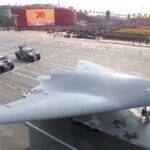Rocket Lab has signed a new multi-launch agreement with Japanese Earth observation startup Synspective for ten dedicated Electron missions through 2027. The deal underscores the growing demand for responsive launch services and the strategic importance of synthetic aperture radar (SAR) satellites in global intelligence and disaster monitoring.
Synspective’s SAR Constellation Strategy
Synspective is developing a commercial constellation of small satellites equipped with X-band synthetic aperture radar (SAR), designed to provide high-resolution imagery regardless of weather or lighting conditions. The Tokyo-based firm aims to deploy at least 30 satellites by the early 2030s to enable near-real-time Earth observation for applications including infrastructure monitoring, urban development analysis, and disaster response.
The SAR payload offers sub-meter resolution and is capable of imaging targets through cloud cover and at night—capabilities increasingly valued by both civilian agencies and defense customers. Synspective’s StriX-series satellites are designed for compactness and efficiency in low Earth orbit (LEO), typically weighing around 100–150 kg each.
The new contract builds on Rocket Lab’s previous launches for Synspective. As of September 2025, Rocket Lab has already delivered four StriX satellites into orbit via dedicated Electron missions from its New Zealand launch site at Mahia Peninsula. The upcoming ten launches will continue this cadence through at least 2027.
Electron as a Dedicated SmallSat Launcher
Rocket Lab’s Electron rocket remains one of the few commercially proven small satellite launch vehicles offering dedicated rideshare-free missions. With a payload capacity of up to 300 kg to Sun-synchronous orbit (SSO), Electron is optimized for launching small constellations or single-customer payloads without the delays associated with rideshare manifesting on larger rockets like SpaceX Falcon 9 or Arianespace Vega.
The vehicle has demonstrated high reliability across more than 40 orbital launches since its debut in 2017. Rocket Lab also offers mission customization via its Kick Stage platform—an optional third stage that enables precise orbital insertion and phasing critical for constellation deployment.
For customers like Synspective aiming to build out evenly spaced orbital planes or revisit times over specific regions, this level of control is essential. The ability to launch on-demand rather than waiting months or years for rideshare slots significantly accelerates constellation deployment timelines.
Strategic Implications for ISR & Disaster Response
SAR-equipped constellations such as Synspective’s are gaining traction not only in commercial markets but also among military and intelligence stakeholders. Unlike electro-optical systems that depend on daylight and clear skies, SAR can penetrate clouds and operate day/night—making it invaluable in conflict zones or during natural disasters where visibility is limited.
In recent conflicts such as Ukraine, commercial SAR data has been used by governments and open-source analysts alike to monitor troop movements, infrastructure damage, and battlefield changes in near real-time. The proliferation of such constellations enhances situational awareness while reducing reliance on traditional government-owned assets.
Synspective’s expansion also aligns with Japan’s broader push toward space-based dual-use technologies under its National Security Strategy revisions from late 2022. While currently marketed primarily for civil use cases like flood monitoring or urban planning support, the underlying technology has clear ISR potential if integrated into national defense frameworks or allied data-sharing agreements.
Launch Cadence & Infrastructure Scaling
The ten-launch agreement will be executed from Rocket Lab Launch Complex 1 in New Zealand—the world’s first private orbital launch site—and potentially from Launch Complex 2 at Wallops Island in Virginia if U.S.-based missions are required. This dual-site capability gives Rocket Lab flexibility to meet customer timelines while navigating regulatory constraints like FAA licensing or range availability.
Electron launches typically occur every four to six weeks when demand permits; however, Rocket Lab continues investing in infrastructure upgrades—including pad automation—to increase cadence toward monthly or even biweekly flights. The company is also progressing toward reusability goals via recovery tests using parachutes and helicopter capture techniques (though these are not yet standard).
This scalability positions Rocket Lab as a key enabler for constellation operators seeking rapid deployment without compromising on mission timing or orbital specificity—a critical factor as competition intensifies among EO players like ICEYE (Finland), Capella Space (USA), Umbra (USA), and Airbus’ Pléiades Neo program.
A Growing Partnership Amid Competitive Landscape
This latest contract marks the third multi-launch agreement between Rocket Lab and Synspective since their partnership began in 2019. It reflects growing trust between satellite operators seeking schedule assurance and launch providers offering tailored services beyond basic transport-to-orbit models.
- 2019: Initial contract signed; first StriX satellite launched in December 2020 (“The Owl’s Night Begins” mission)
- 2021–2024: Three additional dedicated missions delivered successfully
- 2025: Ten-launch deal signed covering missions through ~2027
This continuity gives Synspective predictable access to space while allowing Rocket Lab to secure recurring revenue amid an increasingly competitive market where larger players like SpaceX offer bulk rideshare pricing but less orbital flexibility per customer.
Outlook: Commercial SAR Meets Responsive Launch
The convergence of high-performance commercial SAR sensors with agile launch services marks a significant shift in how space-based ISR capabilities are deployed globally. As more governments seek persistent surveillance tools independent of weather constraints—and private firms monetize geospatial analytics—the demand curve favors companies that can deploy fast, often, and precisely.
If successfully executed over the next two years, this contract could see Synspective emerge as one of Asia’s leading commercial EO providers—with potential spillover into defense partnerships under Japan-U.S.-Australia trilateral frameworks focused on Indo-Pacific security resilience.
The partnership also reinforces Rocket Lab’s position as a premier provider of responsive smallsat launch solutions outside mega-constellation giants like Starlink or OneWeb—catering instead to precision-focused operators who value control over cost-per-kilogram alone.









